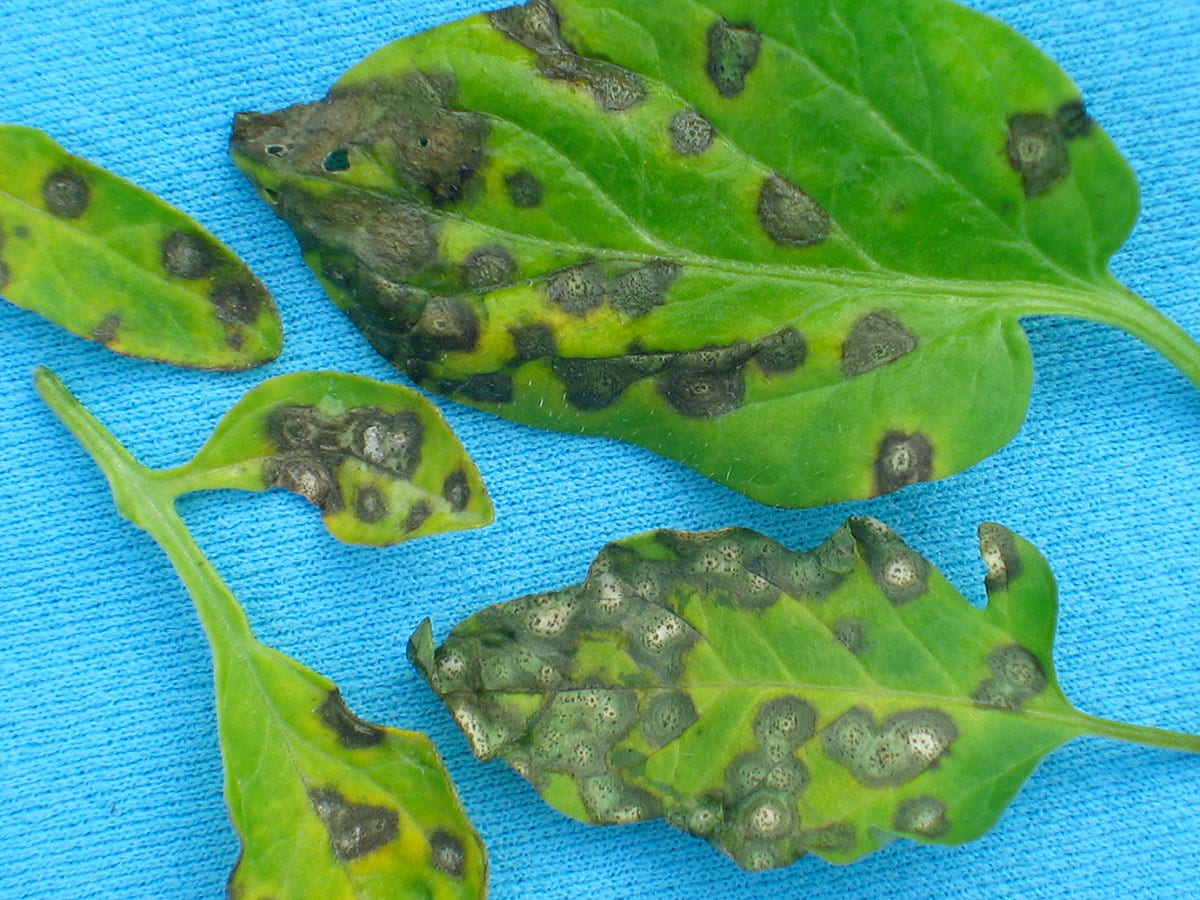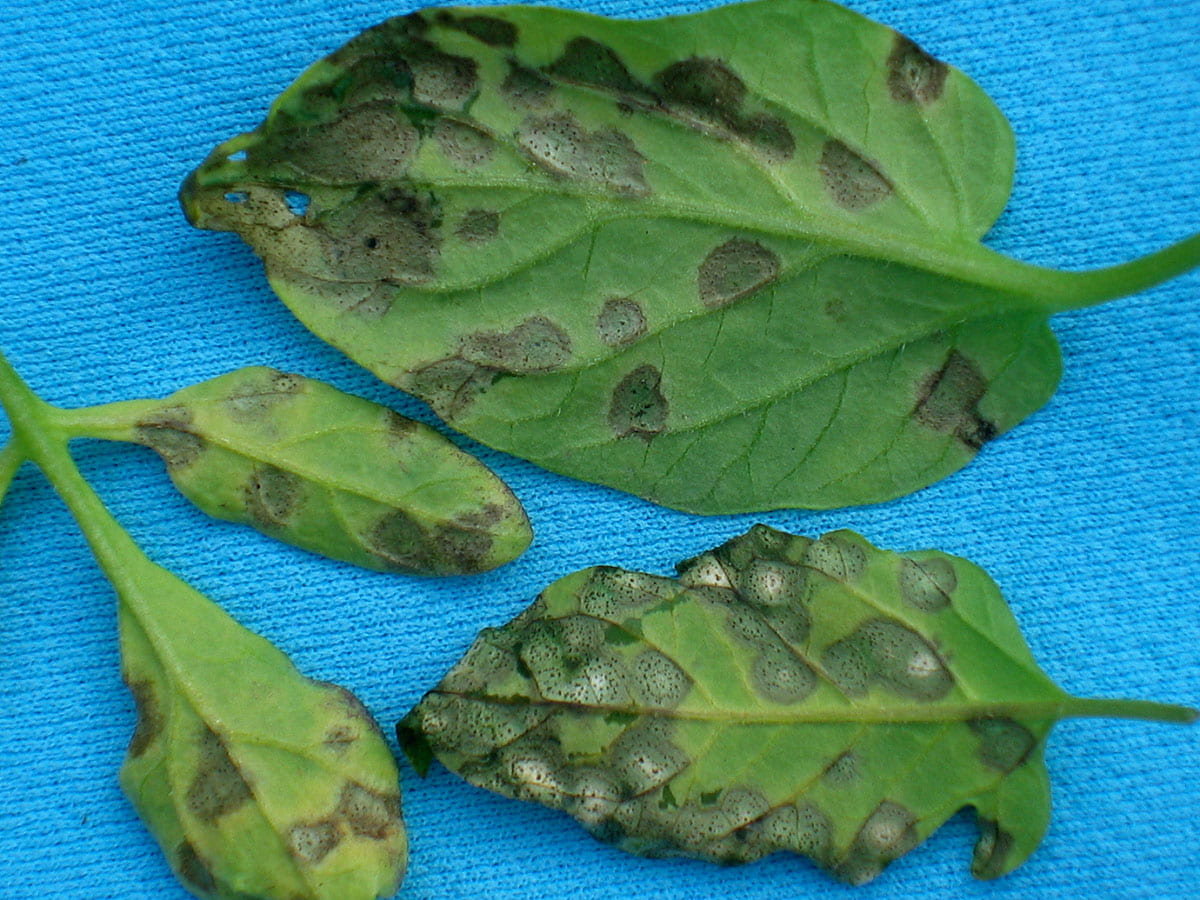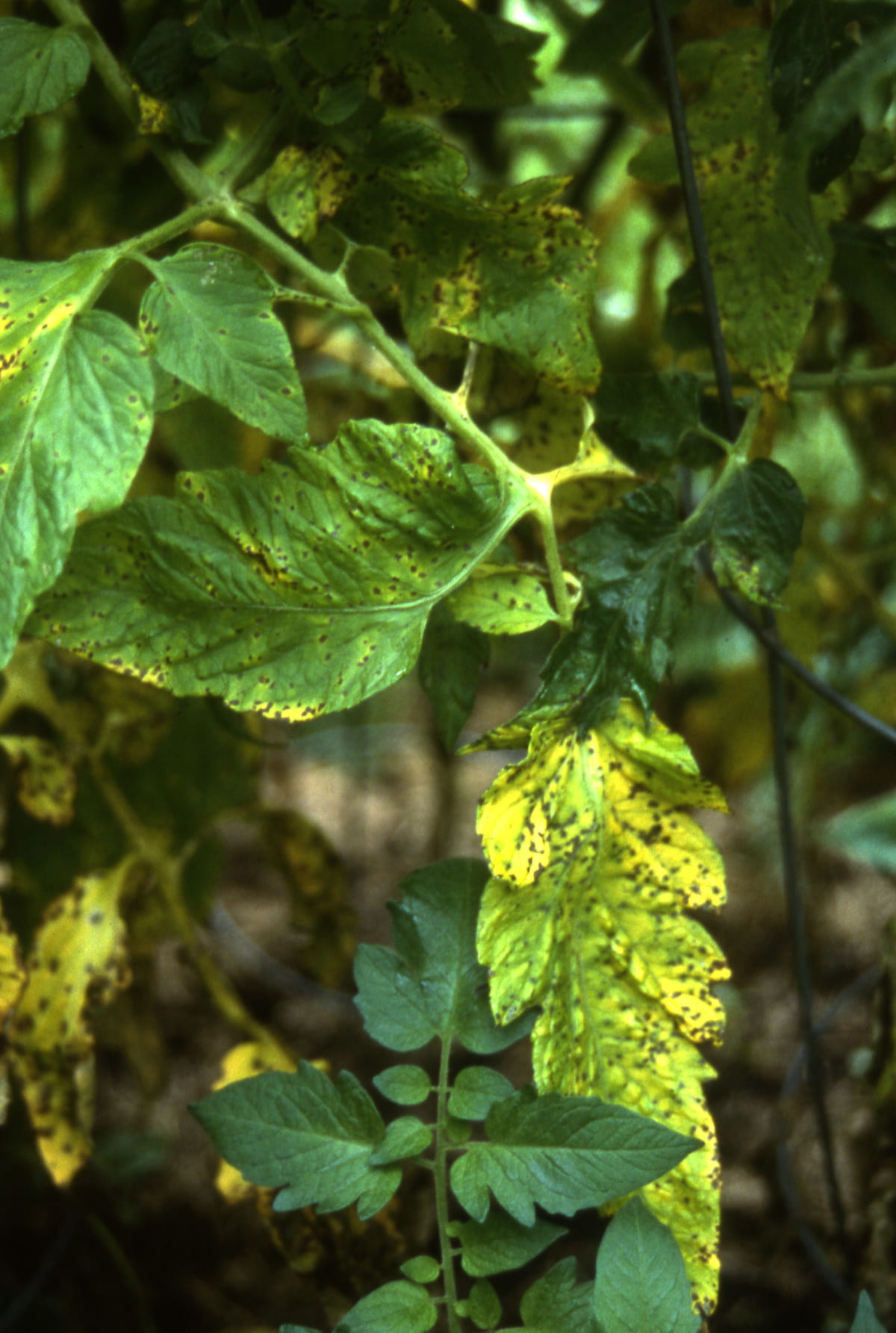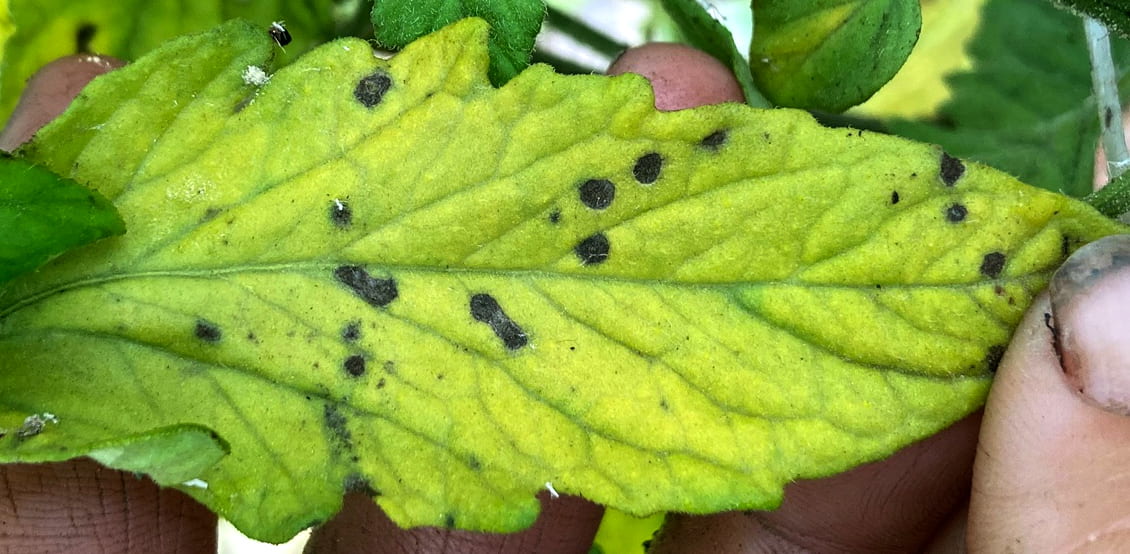Symptoms observed on low, oldest leaves of transplants in a greenhouse.
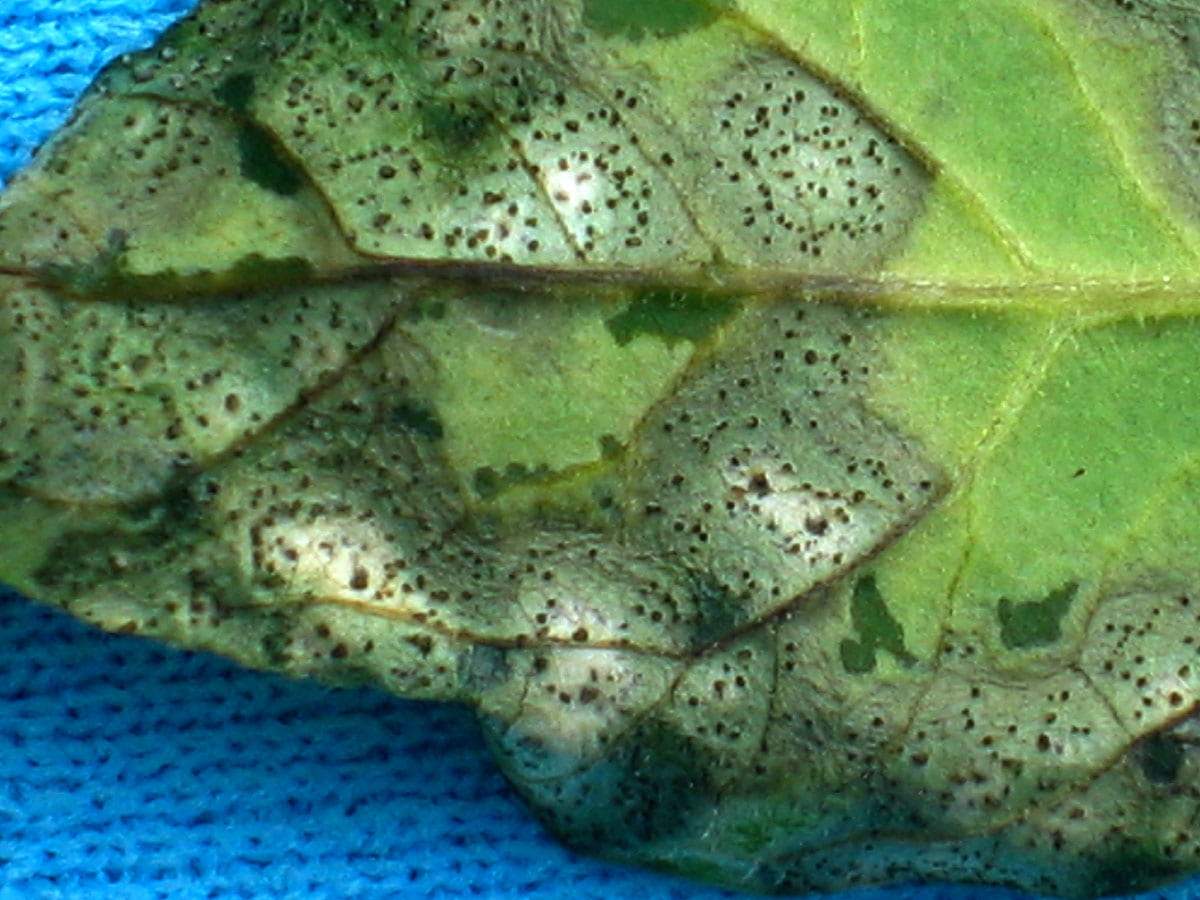 Close-up of lower leaf surface
Close-up of lower leaf surface
Small dark brown spots with tan centers containing very tiny black speck-sized structures visible upon close scrutiny are characteristic of the disease Septoria leaf spot. The black structures (pycnidia) are where the fungal pathogen, Septoria lycopersici, produces spores. Images of these spores in their tendrils are below and closer views are on the lettuce Septoria leaf spot page.
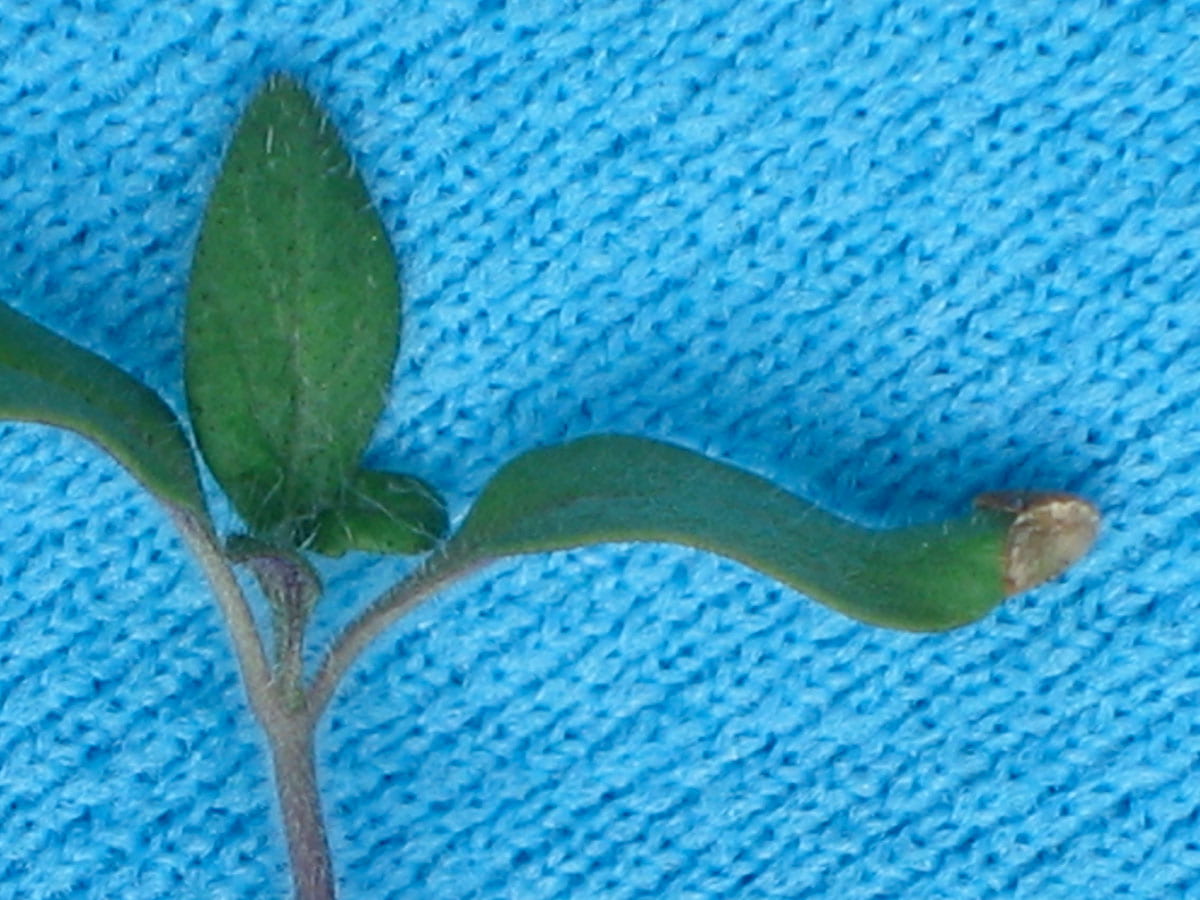 The pathogen causing Septoria leaf spot can be seed-borne. When the seed coat sticks to the cotyledon, any pathogen spores on the seed can easily be moved to leaf tissue by splashing water, which is how this pathogen is spread.
The pathogen causing Septoria leaf spot can be seed-borne. When the seed coat sticks to the cotyledon, any pathogen spores on the seed can easily be moved to leaf tissue by splashing water, which is how this pathogen is spread.
Symptoms observed on plants in the field.
These symptoms usually first appear on low (oldest) leaves after fruit start to ripen.
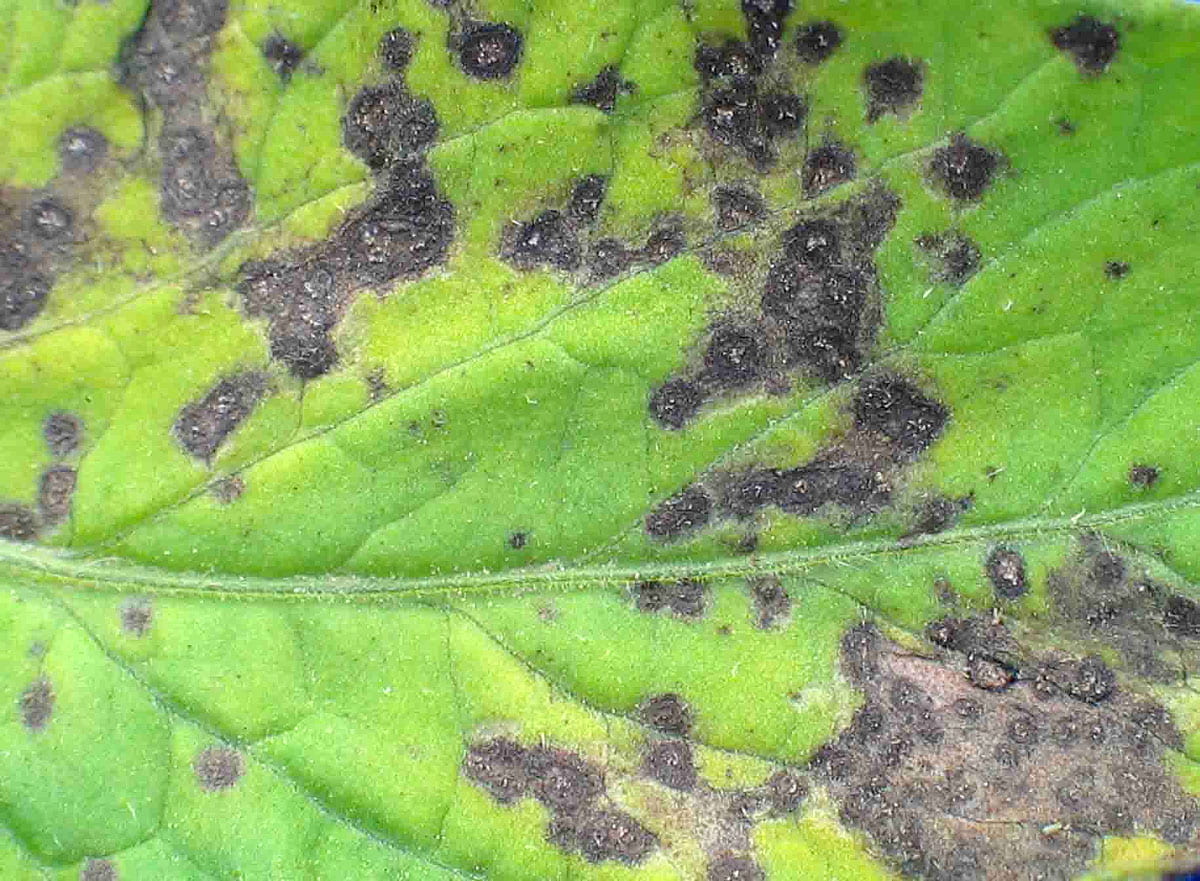
The characteristic tendrils of spores of Septoria can be seen in the leaf spots upon close examination. They are more likely to be present on leaves that have been in high humidity, such as often occurs overnight or when a leaf has been on a wet paper towel in a plastic bag. Images of spore tendrils taken under a dissecting microscope are on the lettuce Septoria leaf spot page.
Above 2 photographs were taken by Sandra Menasha, Vegetable/Potato Specialist with Cornell Cooperative Extension-Suffolk County.

Leaf spots sometimes have concentric rings similar to early blight. Presence of very tiny black structures (pycnidia) in the center of these spots confirms they are symptoms of Septoria leaf spot.
Management: Greenhouse environment can be ideal for development of this and other diseases due to plants being packed close together, daily watering that involves splashing water, and high humidity. Plants should be inspected routinely for disease symptoms, especially when grown from seed not tested or treated for Septoria or other pathogens. Keep varieties as separate as possible in case a disease develops in one. Minimize the time that leaves are wet by using fans, watering sparingly early in the day, spreading trays out, and by moving seedlings out of the greenhouse as soon as they are ready. Dithane and some copper fungicides (including Cuprofix, Champ and Champion) can be used for Septoria leaf spot in the greenhouse. Organocide is a botanical oil approved for organic production and labeled for greenhouse use that provided good control in a field experiment at LIHREC in 2008.
The following atypical symptoms were confirmed to be due to Septoria leaf spot by the presence of pycnidia with spore tendrils, which are visible in the center of the spots in the close-up image and are diagnostic for this disease.
Please Note: Fungicides mentioned are for use in commercial production, not gardens. The specific directions on pesticide labels must be adhered to — they supersede these recommendations if there is a conflict. Any reference to commercial products, trade or brand names, is for information only; no endorsement is intended. For up-to-date information on labeled conventional fungicides see Cornell Integrated Crop and Pest Management Guidelines for Commercial Vegetable Production and biopesticides see the Biopesticides website.



